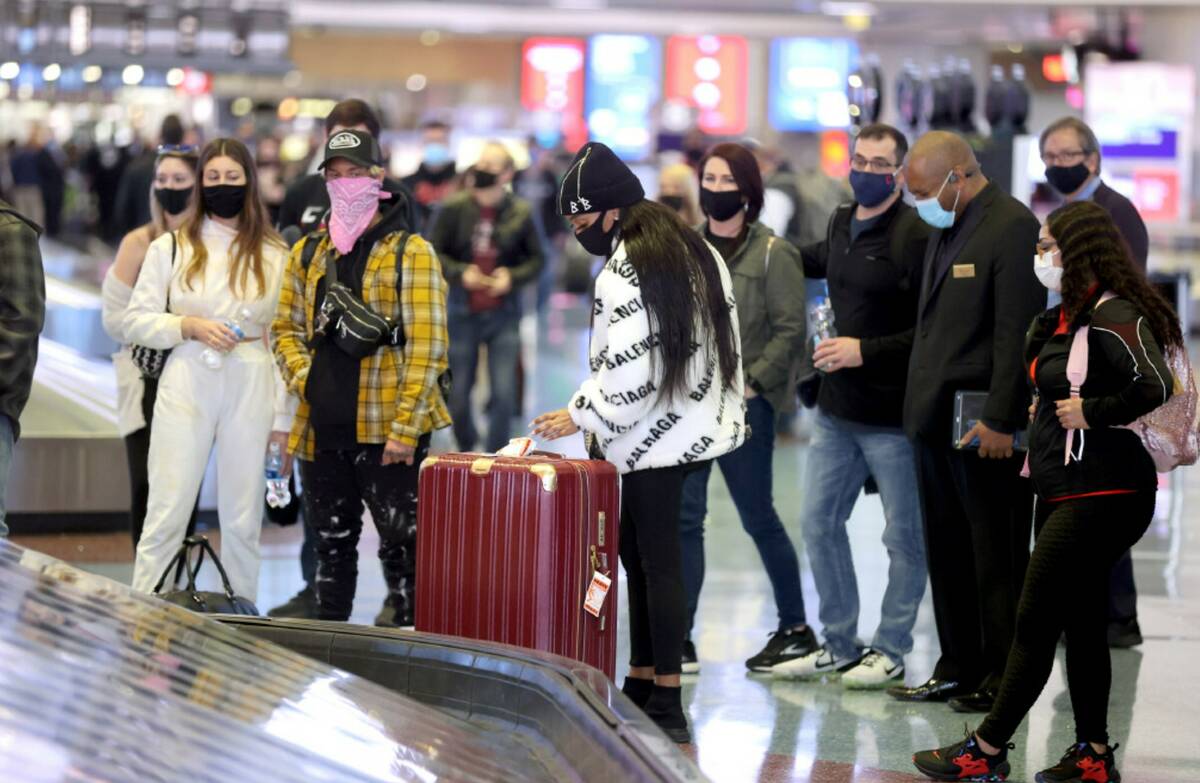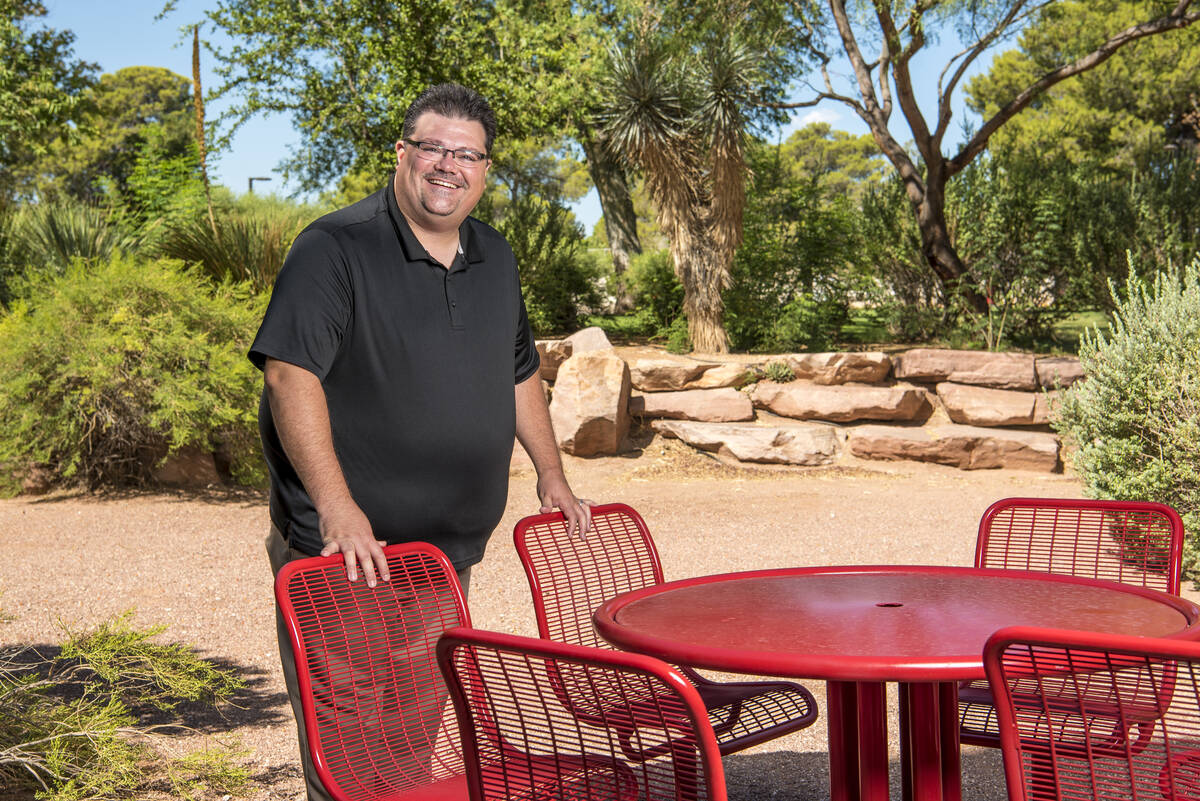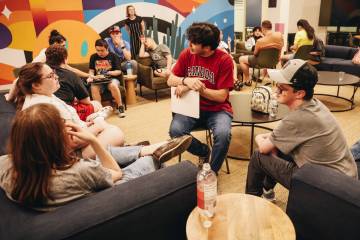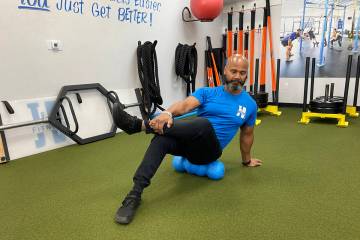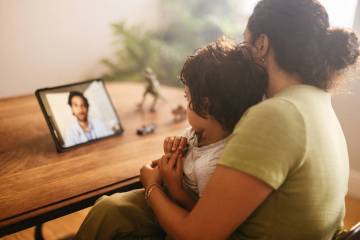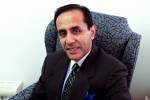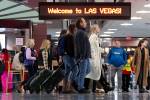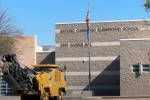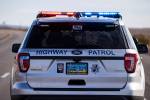COVID cases down, but is a post-Christmas spike on the way?
After a post-Thanksgiving spike this month, COVID-19 cases and hospitalizations in Clark County and statewide continue to decline, new state data shows.
“We seem to be past the worst of the most recent uptick,” said Brian Labus, an assistant professor of epidemiology and biostatistics at UNLV’s School of Public Health.
“Which isn’t to say that there isn’t another one right around the corner, but we’re trending in the right direction,” he said.
The 14-day average for confirmed daily new cases in Clark County declined to 195 this week from last week’s 248 — a 21 percent drop — according to data released Wednesday by the Nevada Department of Health and Human Services. Statewide, new cases decreased to 256 from last week’s 321, a 20 percent drop.
COVID-19 confirmed and suspected hospitalizations in the county decreased by 11 percent, to 248 from last week’s 279, Statewide hospitalizations dipped by 7 percent, to 304 from last week’s 327.
The 14-day average for daily new deaths increased to two from one in both the county and statewide.
The decrease in cases and hospitalizations follows a spike after Thanksgiving caused in part by holiday travel and gatherings, authorities said. The increase corresponded to high concentrations of the virus found in the county’s wastewater. Surveillance of virus shed from the body and found in wastewater serves as an early warning system for disease trends.
At one wastewater monitoring site in Las Vegas, the concentrations of virus earlier this month were the highest seen there during the pandemic. More recently, concentrations have been decreasing or plateauing at sites, said Daniel Gerrity, principal research microbiologist for the Southern Nevada Water Authority.
“While we are still observing high concentrations overall, it is promising that we are not seeing a sustained increase across Southern Nevada leading into January,” he said.
Vanderbilt University’s Dr. William Schaffner, an expert on infectious disease, said he expects to see another COVID-19 spike in the coming weeks, this time stemming from the December holidays.
“So much viral transmission was occurring as we were traveling and gathering,” he said. “There will be increases, but I don’t think there will be anything close to the magnitude that we saw last January,” he said.
It’s a safe bet that there will be increases in both COVID-19 and flu, said Schaffner, who gave no prediction for trends in respiratory syncytial virus, or RSV.
“RSV has not obeyed the rules in the last couple of years,” he said. High numbers of RSV have been reported this fall, months ahead of schedule, resulting in crowded hospital pediatric units across the country.
The number of hospitalized children with RSV has declined over the past week, according to the Nevada Hospital Association. But hospitals continue to need to hold children in emergency rooms until beds become available. Pediatric intensive care units remain full.
Flu-related hospitalizations also are declining, the hospital association said.
Visits to hospital emergency rooms are decreasing across the state. About 15 percent of visits continue to be for COVID-19.
COVID becomes milder for many
COVID-19 has become milder for many people and less likely to result in hospitalization than earlier in the pandemic.
“It does tend to be more mild in vaccinated people,” UNLV’s Labus said. “And with many people having been infected multiples times over the course of the pandemic, a lot of people are experiencing a more mild course of illness.”
Schaffner noted that COVID-19 continues to cause hospitalizations and deaths, especially in older and immune-compromised individuals.
Omicron subvariants BQ.1 and BQ.1.1 made up an estimated 85 percent of COVID-19 cases in the county in the past 30 days, according to genetic analysis of a sampling of positive COVID-19 test results by the Southern Nevada Health District.
Matthew Kappel, a senior epidemiologist with the health district, said no new variants of concern have recently come across his desk, “but it’s something we still should be diligent about.” In the past, some new variants have triggered new surges in cases.
Individuals can protect themselves and help to prevent a surge by getting the updated bivalent COVID-19 booster shot, Kappel said.
He advised those who will be at indoor gatherings and crowded spaces on New Year’s Eve to wear a well-fitted, good-quality mask. This is especially important, he said, for those with a compromised immune system.
“We just need to be vigilant and take those extra precautions during this time,” he said.
Contact Mary Hynes at mhynes@reviewjournal.com or 702-383-0336. Follow @MaryHynes1 on Twitter.



